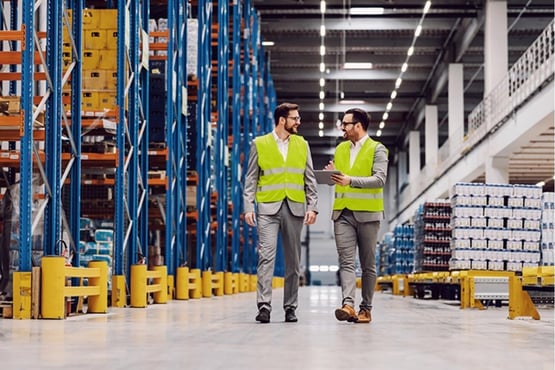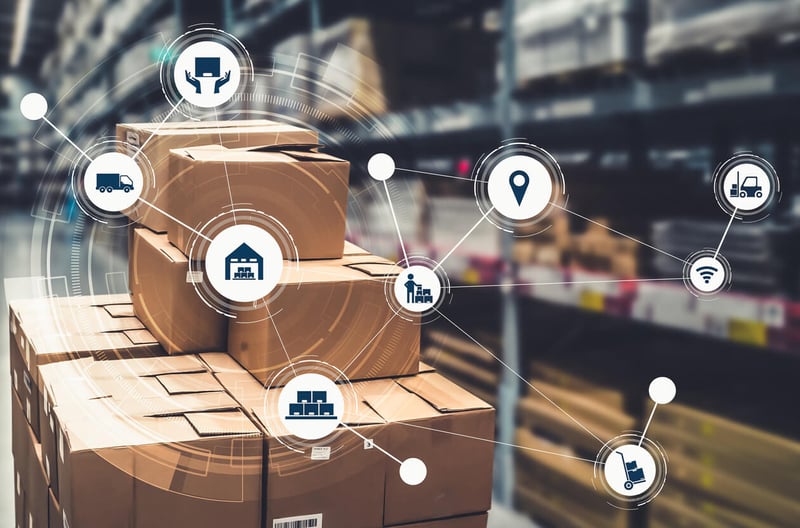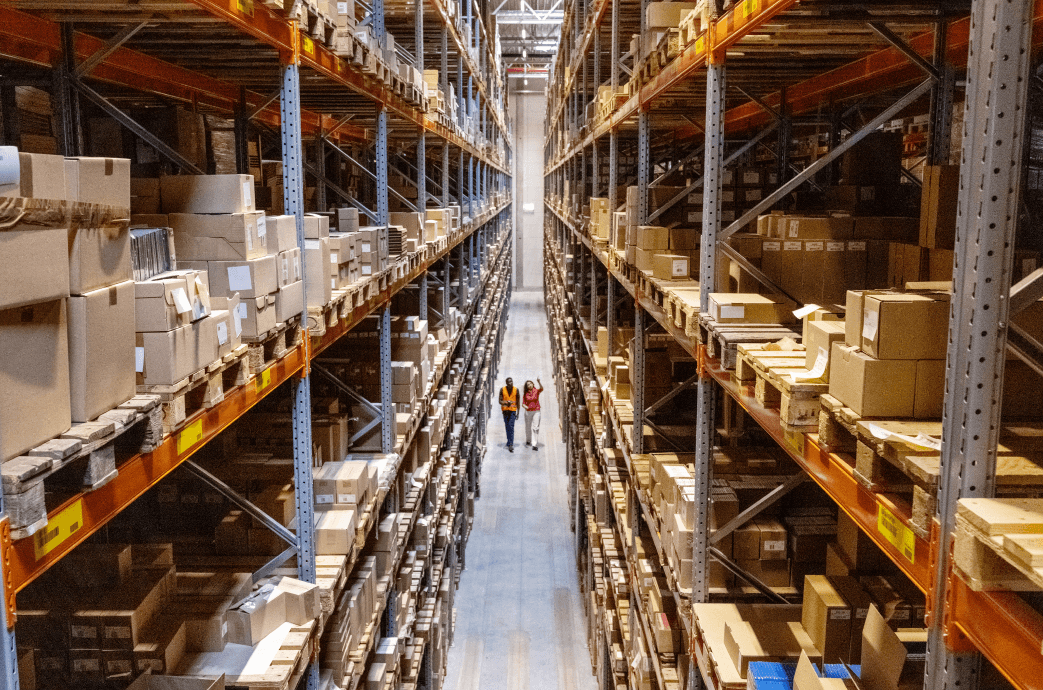
As technology evolves, warehouses can reap numerous benefits from using more automation. The opportunities are endless, and when it comes to efficiency, productivity and quality of work, the results are outstanding.
If your warehouse processes are yet to benefit from automation, why not look into the wide range of options? From small changes to full-scale overhauls, whichever tools you use can have a huge impact on warehouse efficiency and in turn, have the power to improve the working day for everyone involved.
What is warehouse automation?
Warehouse automation is all about streamlining and optimising processes so that a business can run smoothly and with fewer errors. By using technology that operates independently and quickly, such as robots and Artificial Intelligence (AI), warehouses can reduce wasted time and eliminate labour-intensive tasks.
Some businesses have expressed concern that automation spells the end for human employment, but in reality, automation gives workers the helpful tools they need to complete their jobs faster and more efficiently. Automation reduces the need for manual data entry and repetitive work, meaning your employees are free to complete more valuable duties. That means your warehousing team can get more done, without wasting time or energy on manual tasks.
Warehouse automation isn’t exclusively about robots or physical equipment; a more common example of automation is the use of software to organise and record information. This is more reliable than traditional methods and shows how humans and automated tools can work together to accomplish tasks in a far more efficient way.
The latest trends in warehouse automation

To make sense of the warehouse automation options available and to decide which warehousing trends are worth investing in, we recommend starting with the following suggestions.
1. Warehouse Management Systems (WMS)
A cloud-based Warehouse Management System, or WMS, is software that integrates all processes and automation programs into one convenient place. They are easy to set up and more flexible than site-based systems which are far more suitable for the fast-paced, ever-changing conditions of most warehouses.
Whether the size of the company changes or the market shifts, a WMS is an affordable, adaptable system that can be easily updated to suit the new requirements. This is a huge cost saver, especially when it comes to maintaining servers, software and other IT resources. Some WMS providers may even provide advanced cybersecurity, fast processing power, and 24-hour maintenance.
2. Mobile robots replacing conveyors
Increasingly, traditional conveyors are being replaced with more efficient alternatives, which improves warehouse efficiency and safety. There are two types of robots in this application, they are Automated Guided Vehicles (AGVs) and Autonomous Mobile Robots (AMRs).
AGVs are self-guided machines that can carry loads and handle products, which is why they’re often used for pallet handling operations. AMRs are a type of AGV that are typically used for order-picking operations, zone picking, goods-to-person, autonomous piece picking or flexible sortation.
3. Digital barcodes and mobile scanning devices
The rise of scannable codes has been hard to miss and with the speed and immediacy they provide, it’s easy to see why. In terms of warehousing, barcodes and QR codes can be used to identify the contents of pallets, boxes and packages without having to open them or check paperwork. This cuts down on frustrating delays and allows warehouse employees to find what they need as soon as possible.
Many warehouse workers are finding that lightweight, handheld scanning devices can save both time and effort when they’re used for time-consuming processing tasks. They’re ergonomic and give immediate results so people aren’t left waiting for the information they need.
4. Warehouse Drones
Unmanned aerial vehicles (UAVs), more commonly referred to as drones, are being used in many warehouses to provide automated inventory management. These drones can be programmed to perform tasks such as inventory audits, cycle counting, stock finding and more so that workers can spend time on other pressing tasks.
These drones reduce traffic on the warehouse floor which increases efficiency and makes use of wasted space above everything else. With items stored high and wide, drones can identify and count stock without causing any disruptions to other processes.
5. Collaborative mobile robots
Cobots, short for collaborative robots, can assist humans with accuracy and productivity in terms of order picking. Essentially, cobots make life easier for warehouse workers by cutting down on wasted energy. A common example of this is when a cobot reduces walking time by mapping an efficient route for workers to take when picking orders.
6. Warehouse cleaning
Since health and safety have become increasingly important in warehousing, the efficiency of warehouse operations has a lot to do with cleanliness. With the need to clean and organise more frequently, many warehouses have opted to use UV Disinfection Robots and Autonomous Floor Scrubbers that take care of it all. These robots are programmed to navigate the complex layout of any warehouse and can safely sanitise any high-use workplaces.
In high-traffic warehouses like distribution centres, this can make a significant difference in how much work gets done each day as workers don’t have to spend as much time cleaning between operations.
7. Optical Character Recognition
Often referred to as text recognition, Optical Character Recognition (OCR) is a program that can extract and repurpose data from documents and images. For example, OCR scanning can be used to convert information from a printed label into a digitally readable text document. That allows warehouse workers to update labels or paperwork as needed, rather than having to manually enter the data.
How warehouse automation benefits your business
By investing in automation tools, your warehouse can operate faster and deliver better results. By cutting down on wasted time, unnecessary exertion and time-consuming tasks, automation gives warehouses the ability to complete their duties far more efficiently.
If you want your business to run more smoothly, automation is the best place to start. You could start small, with scannable barcodes on all of your packaging or organise your processes into a completely integrated management system. Whatever your business, we recommend talking to the experts who can help you to find the best solution for you.
At Primepac, we design many of our packaging products to seamlessly integrate with our customers’ warehouse operations. For more information on what we offer, talk to our team today or check out our full catalogue.






.png)

